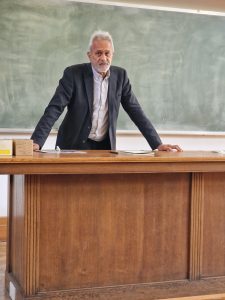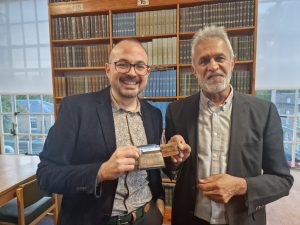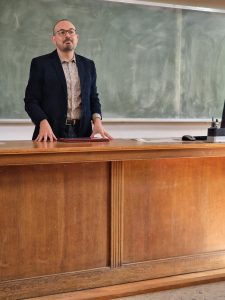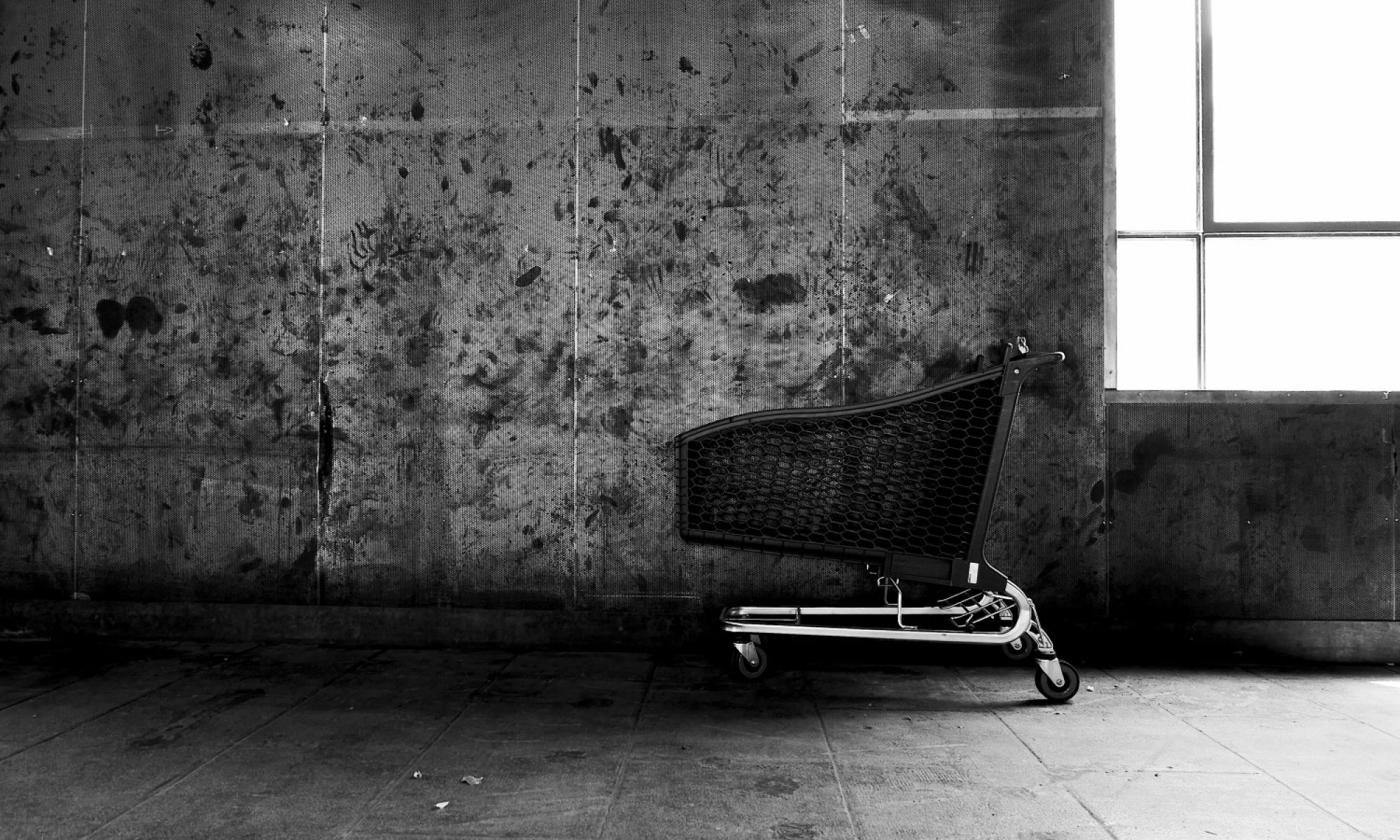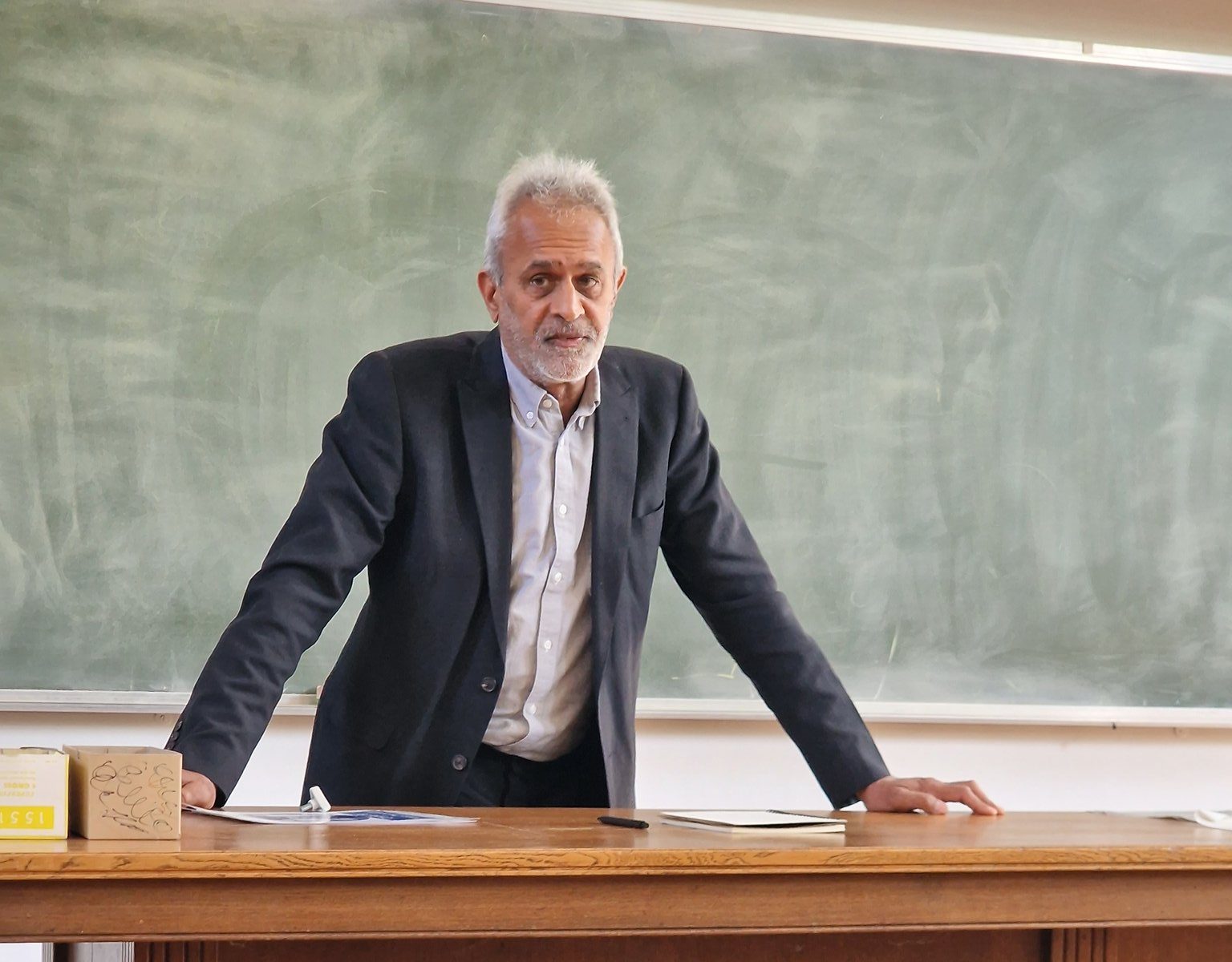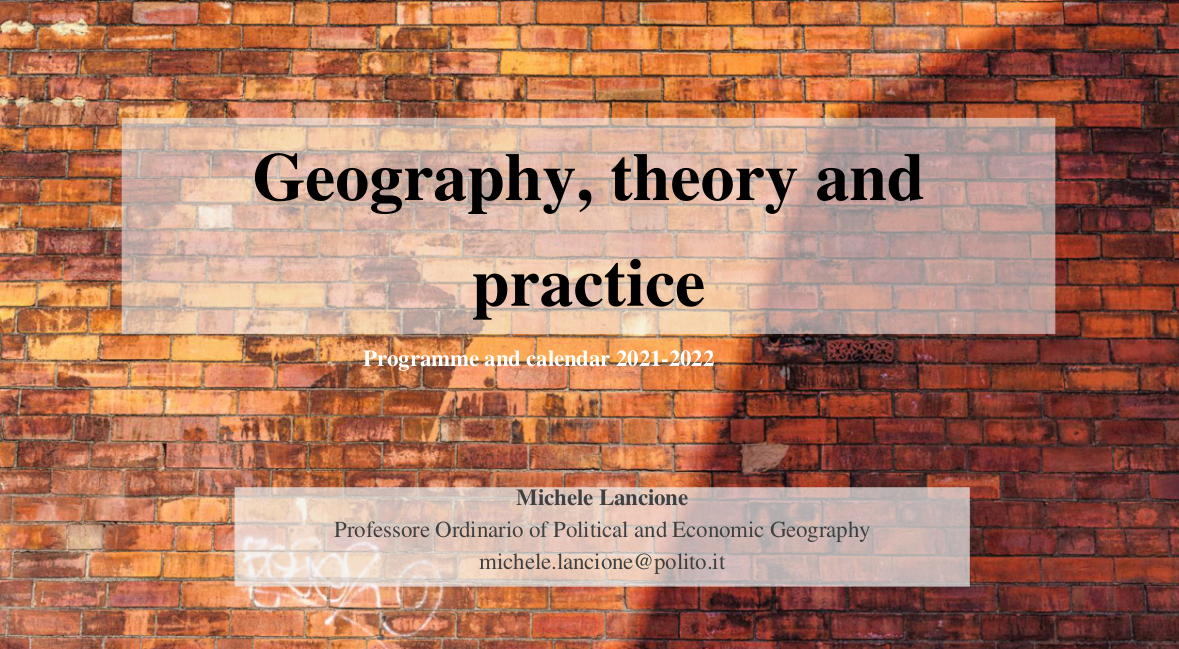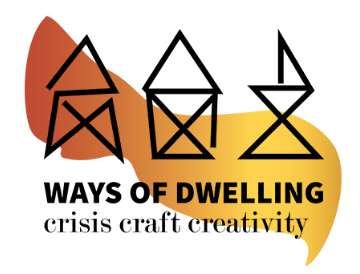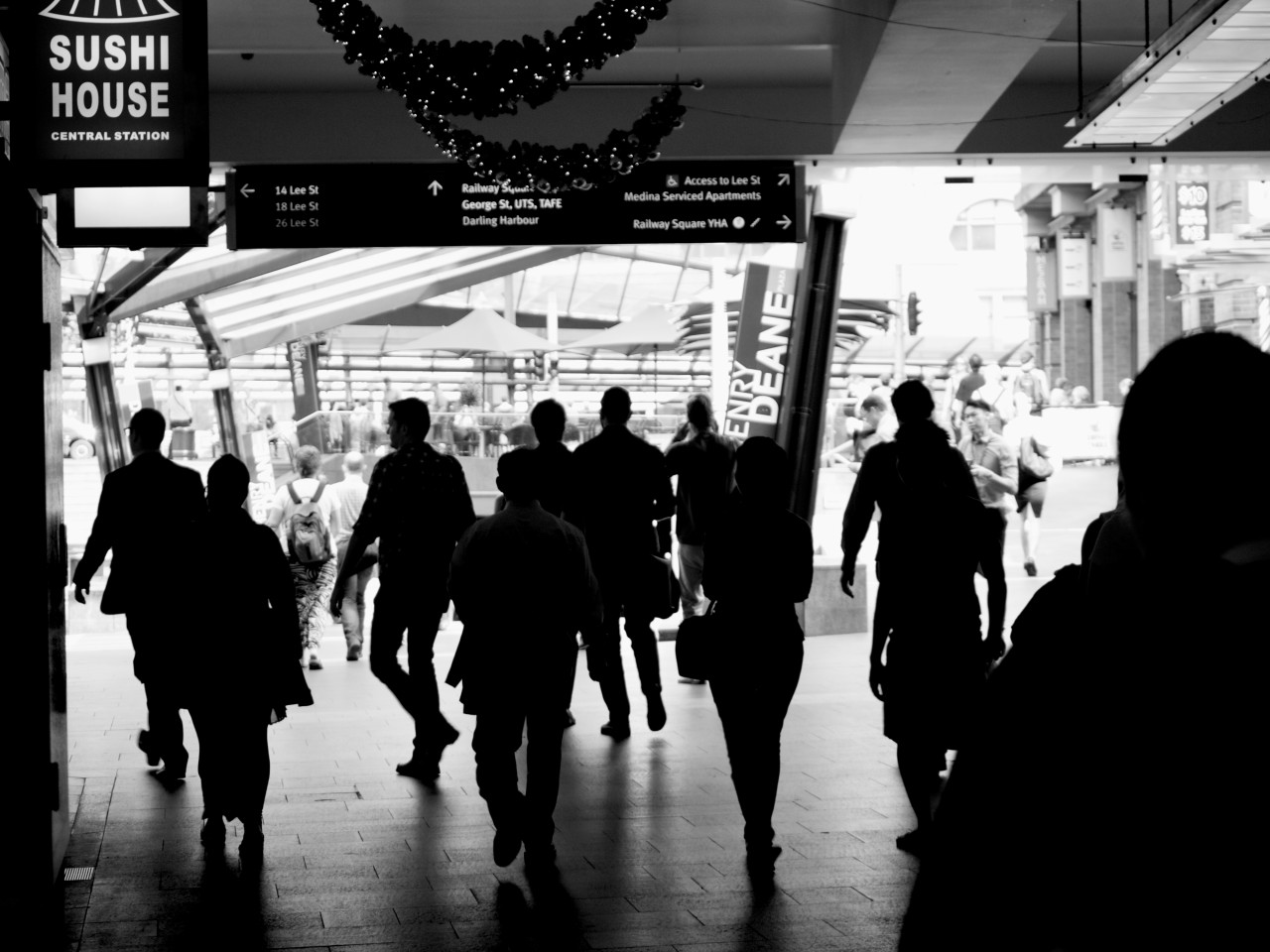Yesterday, 29th Sept 2022, I took part in the retirement party of my former first PhD supervisor and fundamental academic mentor, Ash Amin. The event was organised by Bhaskar Vira at the Department of Geography, the University of Cambridge, followed by an evening dinner at Emmanuel College.
Beyond an engaging conversation among Ash, Philip Howell, and Maan Barua, the day consisted of a series of ‘oral testimonies’ and celebrations of Ash’s thinking and doing, carried through by four of his former students. I shared the task with the excellent Tatiana Theme, Lisa Richaud and Maria Hagan.
I owe a lot to Ash. His intellectual curiosity and his care for my persona were fundamental to the development of my own thinking and love for academic work. Below you can read my oral festschrift to him, which I hope summarise well my sentiment toward Ash the person, and Ash the scholar. At the end of the text, some pictures of the event, taken by Stephen Ajadi (shared with permission).
***
The framework of the encounter
Michele Lancione, for Ash Amin
Thank you for having me here today. It is a great honour to be part of this afternoon for and with Professor Ash Amin. I am honoured to be here because it means that in joining celebration, I have also – at least a little – been part of the journey. I am talking about the journey of an individual who has constantly questioned the grounds he has contributed to establishing, the journey of a scholar that has shown, at every turn, genuine conceptual and political curiosity: Ash as a being thirst for ideas, for well written and engaging arguments, for ways of thinking beyond the canon. This day allows me to thank Ash for a unique gift he gave me and many others: I am referring to the reverberance of his intellectual desire, a vibrance that at times accelerated as an impatience, a power inviting who encounters it to question and to push; to read more and to read better; to write with consideration; to treat intellectual labour with care.
The privilege of having encountered Ash’s intellectual affection renders being here at the same time beautiful and tricky. I want to be honest: I have struggled to put this short text together. And this is not because I don’t know what to say about Ash’s scholarship – but it is because, ultimately, I am not sure I want to say, I am not sure I want to be part of the ritual marking the process of retirement.
I started writing these lines few weeks ago. In my spare time, I went back to some of the early writings of Ash, which included, among the known text on economic and regional geography, a rich report – typed in Italian – on the ‘Stella’ neighbourhood in Naples. Then I re-read his foundational works on placing globalisation, regional inequalities, and the quest to argue for a new politics of place (what Doreen Massey called a ‘progressive sense of place’). I then switched to the writings on ethnicity, race, and encounters, and continued with the book through which I first encountered his thinking – back in 2006, reading for my Master’s degree the Italian translation of Cities, Re-imagining the Urban, coauthored with Nigel Thrift. After that, I dwelt again in the pages of my favourite book of his, Land of Strangers; then I flipped, this time faster, through the pages of my least favourite book of his, Arts of the Political (Nigel will pardon me, I hope). This journey was concluded by re-appreciating his most recent works on the notion of animated space, his papers on migrant mental health in Shanghai with Lisa Richaud, and by re-reading the introduction to the book we recently co-edited together for Duke – another of his gifts to me.
In re-approaching these texts, I was moved by the idea of providing to you today a concise overview of how these separate bodies of work are ‘one’; to give you a hint of how, at least in my reading, they are all grounded in a profound desire – a power – to articulate a politics for the just city – a project that for Ash entails questioning and re-approaching each of these terms anew. City, as a mechanosphere of human and non-human that has an act of its own, a life trespassing the rationale of policy, an intelligence of intelligences made of computations but also of affects, of atmospheres as much as of cement, of intentionalities and violent extractions, as much as of di-vidual, only partially and momentarily coherent, assemblage of volitions, metabolic and ecologic impulses, matter and discourse. Just, as a question of what kind of justice and for whom, when so clearly the language of rights has failed to provide the mean for struggles, since fewer and fewer institutions are enabled to capacitate and to defend capacitation, and more and more ‘rights’ become signifier to be appropriated by extractive practices and enduring racial dispossession. Politics, read by Ash at the intersection of urbanity and justice, both as a project to be carried through and an agent of action – a proposition that, for Ash, has to deal with economic, ecological and social structures but requires attention to how these are a matter of multiple agencies (human, non-human, infrastructural, atmospheric) providing much social flesh – disempowering but also affirmative social flesh – to work with.
My intention today was to tell you how much Ash’s quest for a politics for the just city affected my intellectual journey and to point out how his writings – sometimes appearing perhaps disparate and concerned with too much – are instead held together by a profound commitment to social justice with a precise orientation. The project is to unpack the social beyond the pastiche of canonical sociological thinking while simultaneously maintaining a commitment to crafting socio-geographical imaginaries and methods that might be useful, directly appropriated, and put into action. But the more I have tried to write such a text, the more I confronted myself with the meaning of this exercise – the performative act of marking retirement, as I said earlier.
And so I scrapped what I had written, I trashed the ideas and the notes, and I instead wrote a text message to my dear sister Tatiana Thieme and, through a short exchange with her, I got the confidence to say what I really what to say; to affirm what I think today should be all about. My dear audience, that is simple. Today is just an illusion. You, all of you, called out of your busy academic and non-academic lives, you who have taken time off to come into this room to ‘celebrate’ and to ‘perform’, you, my friend, are no more and no less guests of an illusion, because today, I hope the might Cambridge University won’t mind, today, we are retiring no one today. Because if I may accept the fact that, after today, Ash will have more time than ever to chop his fingers in his beautiful garden, I shall not accept the option of retiring the energy of which I spoke, the intellectual burst with which he faces you every time you talk to him, as well as that questioning look of his, which makes immediately apparent to you when you haven’t done enough work, but also those same eyes running places in those rare occasions in which you might have said something he hasn’t already thought of.
No retirement today, no festivities, everybody goes home. Without please, and without excuses. We are just asking Ash to perform again and again because love for intellectual labour is so much needed today more than ever – at times in which your sad country is so clearly detaching itself from its ground and will sooner or later entirely collapse, while mine dances the swing of nationalism and fear once again, and the affect of militarisation wraps all of us together, like a cloth tight on our necks and eyes – tighter for some than others, but increasingly suffocating for the many. It is a violent image; I am conscious of that. A violent image to render the fierce powers of international financial capitalism, authoritarian pursuits, war industries and reactionary tunes, turning our dwelling on planet earth as real and felt, genuine dystopian, Land of Strangers. What is needed to cut through such a violent cloth is a multiplicity of grassroots political struggles – but the latter, to be imagined, require the labour of intellectual unrest – a labour that to speak truth to power needs to be fulfilled by a desire not to be satisfied, by any explanation, ever. To teach of this thirst in our classrooms, to write on such emancipatory affect in our papers and books, to be constantly unsatisfied and to be recharged through that — this is what Ash’s works speak of; this is what he has taught me with his silences, his nods, his sometime incomprehensible fabulations, and this is what today we are not going to retire.
I remember well the first time I arrived in the UK. It was September 2008, and I was due to commence my PhD at Durham. I landed at Heathrow, which was my first time in the country. When there, I passed through the usual duty-free shops, waiting for my connecting flight to Newcastle. To have the chance to relate to what follows, you have to know that I grew up in a tiny rural village in the North West of Italy, in a working-class family. My father, now retired, was a factory worker at FIAT, and my mother a cleaner. Becoming an academic was not in the plan, and neither was, to be honest, completing the entire cycle at Uni. I benefited from the scholarships offered by the Italian Public Education system, and from the fact that Italy is filled with Pizzerias where a waiter is always well accepted. I kept doing multiple jobs up to the end of my PhD, and it is only thanks to Ash’s and my former MA supervisor Francesca’s efforts to mobilise funding that I was able to carry the PhD through completion. But this is not what I want to focus on.
The point is that when I was waiting in Heathrow for my connecting flight to reach Ash at Durham University, I ended up buying two things. Well, I proudly and decisively bought two things. The first was a Paul Smith’s wallet. The second was a Paul Smith keychain. Of course, these were unnecessary and foolish purchases. Of course, in buying those two things, I wasted the money I had saved for many weeks of subsistence (Tesco baked potatoes and beans came to help). And, of course, luxury is evil and should be banished. But also, and at the same time, seeing from the eyes of that working-class kid with totally broken English and zero ideas about his new life, those in the Heathrow candy shop were the only possible purchases. Those purchases were a way for that kid to tell himself that things were going to be different. It’s easy, now, for me and all of us to laugh at that – and to see how problematic that was. And yet, it happened, and those two things are still with me to date, 14 years after my first landing in the country.
I thought that the keychain was the right gift for you, Ash, which is why – while I am still holding onto my wallet – I am giving it to you today. For keys are the object of home, and homing, homelessness, dwelling, inhabiting, and belonging are at the core of our shared interests. But partially, also, because you gave me keys, real ones, when you pushed me to read all those books, when you asked me to write all those essays in the first year of my PhD, and then, after, when you invited me to go back at the drawing board when things did not make sense and, most importantly, to go back there when they made too much sense. The keys you gave me will stay with me for more than 14 years. And so, to celebrate your non-retirement, for all the openings that you will offer to scholars of the future, through your direct engagement and your writing, here is my small symbolic gift for you: a warn, silly Paul Smith keychain figuring a colourful Mini car. Because sometimes the affective, as the political, can be carried through the most insignificant details.
